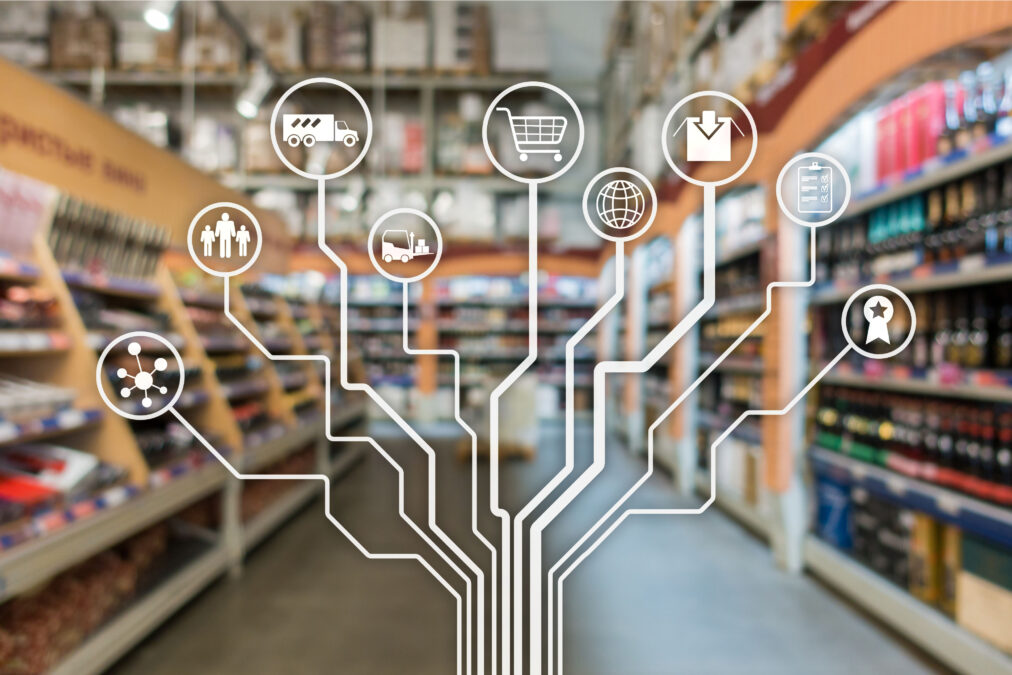Shoplifting is an ongoing issue facing the UK retail sector. According to the 2021 BRC Crime Survey report, £935 million was lost to customer theft in the latest year. Aside from the financial damage, violence and abuse against retail, employees have been steadily rising year-on-year. With 455 incidents reported per day, shoplifting has taken its toll on workers’ safety, wellbeing, and mental health.
Whilst the widespread closures of shops during the pandemic might have decreased the opportunities for shoplifting, many retailers have been operating on a skeleton of their pre-COVID rota since reopening. VoCoVo’s research showed that over a third of UK retail workers have experienced store theft since the pandemic began, meaning shoplifters have certainly been taking advantage of reduced employee numbers.
Just as the UK restrictions came to an end, the ‘pingdemic’ began, creating an even bigger challenge for the retail sector which was already struggling and operating with reduced workers on the shop floor. As record numbers of employees get ‘pinged’ by the NHS app and are forced to self-isolate, more wannabe thieves see skeleton crew shops as an open invitation. In light of the growing shoplifting concerns and the unpredictable nature of Covid restrictions, retailers must act now and invest in the right technology to enable them to better protect their teams and their stock.
Leveraging data: what retailers can learn from Netflix
Catching shoplifters with facial recognition technology
By enhancing in-store security technology infrastructure, businesses can significantly reduce the level of stock going missing and ensure their employees feel safe and protected whilst working. Over the past decade, security technology has considerably evolved, giving retailers a multitude of different options to choose from – facial recognition, improved internal communication methods and smart computer vision technology, to name a few.
For example, in-store systems with integrated facial recognition software can identify previous offenders based on whether their faces’ data points match with the ones in a shoplifter database. By uploading the database into the cloud, multiple branches of stores can share the same information, making it difficult for a thief from Manchester to enter the Liverpool store without being flagged.
However, whilst these systems enable stores to blacklist known shoplifters, they are not able to alert employees about thieves who haven’t been caught yet. Additionally, even with AI and facial recognition advancements, the technology is still prone to errors and isn’t ready to help spot those who don’t scan every item or enter wrong information at the self-checkouts to pay less for a product. There are also growing privacy concerns, violations of rights and personal freedoms as people object to having their faces recorded and stored for unknown future use.
Connecting teams through internal communication tools
More self-isolating employees during the ‘pingdemic’ means a greater chance of being left alone on the shop floor. Sensing the vulnerability, criminals can jump at the opportunity to steal or abuse a worker. By deploying internal communication tools in stores, such as headsets, employees can feel safer as they are always connected to colleagues and security teams. Headsets empower workers in the knowledge they are always able to connect with their colleagues quickly and discretely, giving them the confidence to act when they see suspicious behaviour. With phone systems integration, voice communication solutions could also allow employees to contact emergency services should the need arise.
Provided that there is a suitable infrastructure already in place, all retailers can benefit from implementing internal communications tools. However, a potential challenge might arise from the fact that some workers do not feel comfortable being connected at all times or perhaps they are not as tech savvy as their colleagues. Choosing tools that are intuitive and easy to use will reduce the time required for training, and encourage all employees to improve their team communication and operational efficiency.
How cloud communications helped maintain automotive sales in the pandemic
Eyes wide open: Smart computer vision technology
Beyond facial recognition and internal communication tools, more retailers have been looking at implementing computer vision technology, which works by continually auditing and tracking stock levels on store shelves. Through machine learning and advanced algorithms businesses can easily identify any instances where stock depletes outside of established shopping behaviour.
Integrating computer vision technology with voice communication tools can help retailers address the theft problem on a more proactive basis. As an item goes missing, a real-time notification can be automatically sent to employees. They can then take immediate action to stop the shoplifter, for example by deploying a store-wide tannoy announcement informing customers they are CCTV cameras in operation or engage security guards at the front of the store to check customer receipts. The smart vision technology offers a huge potential to deter in-store theft by joining up systems that may already be in place.
The battle to protect employees
There are many approaches to deterring theft that retailers can take. After what has been a difficult year for the retail sector, and in the face of the current labour crisis, a rise in shoplifting and retail worker abuse can significantly damage employee morale, leading to mental health issues or increased resignations. The onus is on retailers to deter would-be thieves by implementing appropriate and effective safety measures to protect team members and reduce security threats across their stores.











